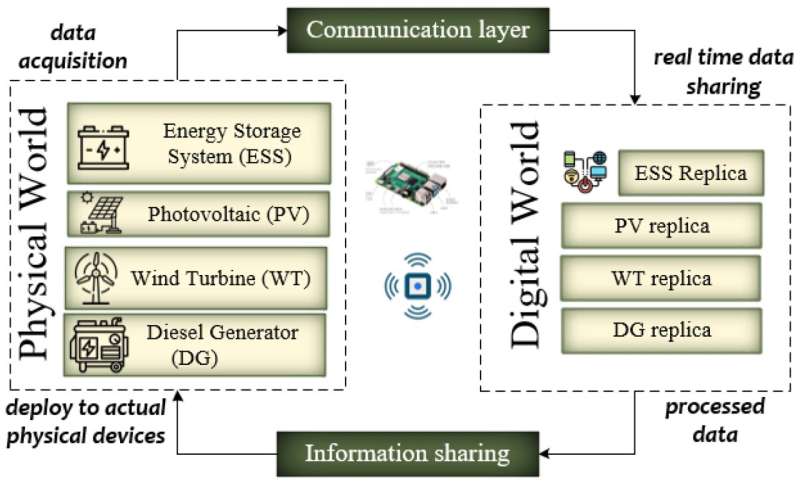
Mathematicians from RUDN University have proposed a system that helps to use energy more efficiently. It is based on the Internet of Things and the digital twin of the household. The neural network optimally distributes tasks and decides how to divide energy between devices. The study is published in Sensors.
Sustainable households of the future must have an optimal energy distribution system. A relatively new concept that reflects this is nanonetworking. This is a decentralized energy distribution system that operates at the level of one residential building.
The application network should not depend on external control—it distributes loads and regulates voltage depending on current needs. Therefore, the main task for implementing a nanonetwork is to optimize energy exchange. A RUDN University mathematician with colleagues from Saudi Arabia and South Korea proposed using digital twins for this, which work on Internet of Things (IoT) technologies.
"The Internet of Things has already led to significant transformations in many areas: medicine, navigation, and so on. However, debate continues about the yet unexplored opportunities of IoT in the energy industry. Distributed energy systems must increasingly improve performance. This requires a transition from traditional smart grid systems to IoT platforms based on digital twins.
"Energy storage systems in nanonetworks have potential; they allow spending energy more rationally, increase their resilience, and move to sustainable practices through the efficient storage of excess energy," Ammar Muthanna, Ph.D., Director of the Scientific Center for Modeling Wireless 5G Networks at RUDN University said.
The system proposed by mathematicians is based on two concepts: digital twins and the IoT. It is assumed many sensors monitor the current status of devices in the house. Information from them is transmitted to the IoT system, where tasks are coordinated using an artificial neural network. In this way, the optimal mode of energy consumption is selected. The neural network makes a forecast and formulates the best strategy.
RUDN University mathematicians described the proposed system in a theoretical form and presented the algorithm in the form of code. To test how the proposed architecture can perform in a real-world environment, the authors built a simulation of 21 nanonetworks. Compared to similar systems, the number of uncompleted tasks decreased by 1.5–2.5 times.
"Our proposed architecture is a viable and practical option for implementing smart grids in real-time. It effectively manages the distribution of energy resources, and promotes sustainable development and efficiency," Ammar Muthanna, Ph.D., Director of the Scientific Center for Modeling Wireless 5G Networks at RUDN University said.
More information: Faiza Qayyum et al, Maximizing Efficiency in Energy Trading Operations through IoT-Integrated Digital Twins, Sensors (2023). DOI: 10.3390/s23249656
Citation: Proposed system shows how IoT could reduce household energy costs (2024, January 31) retrieved 31 January 2024 from https://techxplore.com/news/2024-01-iot-household-energy.html
This document is subject to copyright. Apart from any fair dealing for the purpose of private study or research, no part may be reproduced without the written permission. The content is provided for information purposes only.
